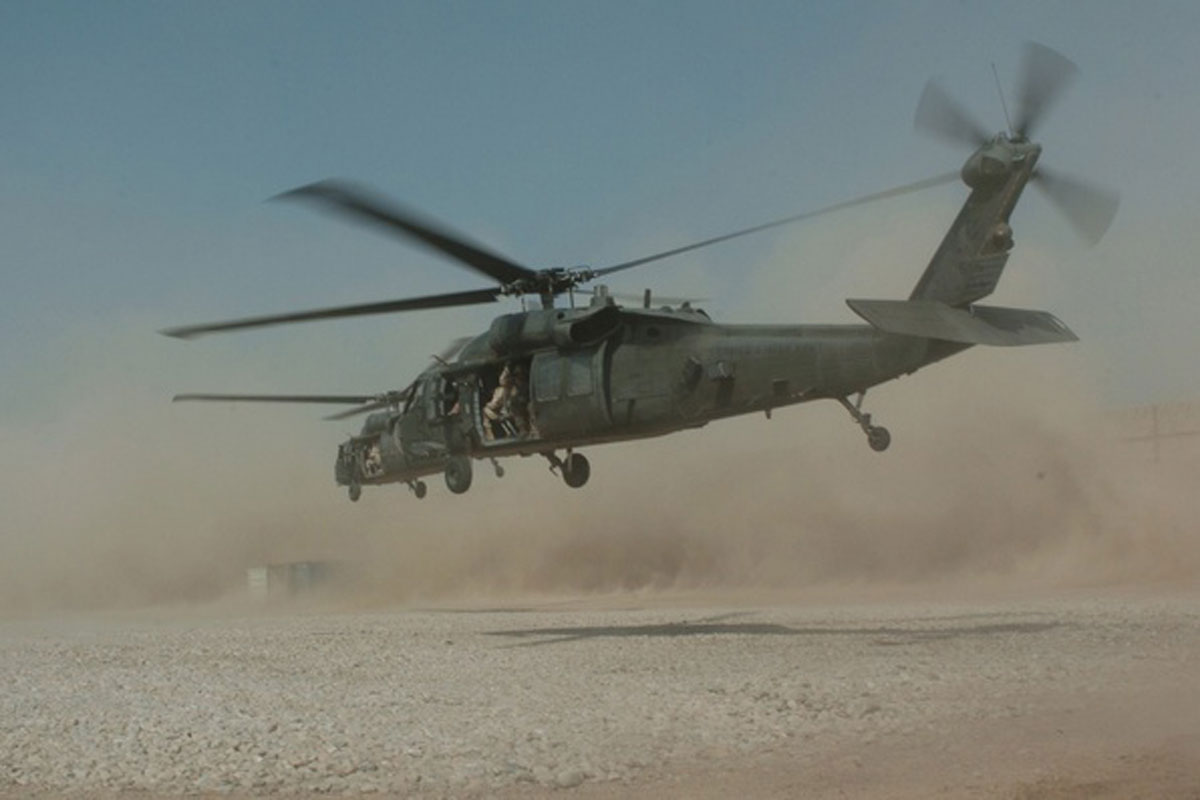Security First: Important Steps in UH 60 Helicopter Maintenance
Navigating Uh 60 Helicopter Regulations and Compliance Requirements

Regulatory Structure Overview
The regulatory framework regulating UH-60 helicopter procedures includes a complicated set of standards and regulations developed by air travel authorities. These policies are developed to guarantee the efficient and secure operation of UH-60 helicopters in various environments. The Federal Aeronautics Administration (FAA) plays a central duty in establishing and imposing these regulations, which cover a vast variety of operational facets, including airworthiness standards, pilot credentials, maintenance requirements, and functional procedures.
Conformity with these guidelines is vital for helicopter operators to keep the greatest degrees of security and operational stability. Failure to stick to these regulations can cause major effects, including crashes, injuries, and regulative sanctions. Helicopter drivers must stay educated about the most current governing developments and make sure that their operations are in full conformity with all applicable guidelines and criteria.
Airworthiness Directives and Assessments
In the middle of the regulative structure regulating UH-60 helicopter procedures, a critical focus lies on compliance with Airworthiness Directives and conducting comprehensive evaluations to maintain security requirements and operational dependability. Airworthiness Regulations (ADs) are provided by air travel authorities to deal with risky conditions in aircraft, including the UH-60 helicopter, and mandate specific activities to be taken by drivers or proprietors. Compliance with ADs is obligatory, and failure to stick to these directives can cause significant effects, including grounding of the aircraft.
Regular evaluations are paramount to ensuring the airworthiness of UH-60 helicopters. These inspections incorporate an array of checks, from routine daily inspections performed by pilots prior to and after flights to much more extensive scheduled upkeep assessments brought out by certified mechanics. In addition, special inspections may be needed based on specific problems or events. By adhering to a strict inspection routine, operators can detect and attend to prospective issues immediately, thus boosting the security and reliability of UH-60 helicopter procedures.
Pilot Credentials and Training

Pilot training for UH-60 helicopters is comprehensive and covers a vast variety of subjects, consisting of aircraft systems, emergency treatments, navigation, and mission-specific training. In addition, pilots undergo simulator training to exercise different emergency situations in a controlled setting. This training assists pilots develop the essential skills to handle tough circumstances efficiently.


In addition, continuous training and expert development are important for UH-60 pilots to remain current with the most recent laws, technology, and best methods. By buying pilot credentials and training, drivers can improve security, maximize efficiency, and make next sure compliance with regulatory needs in the procedure of UH-60 helicopters.
Operational Limitations and Needs
Pilot certifications and training serve as the foundation for recognizing the operational constraints and requirements connected with UH-60 helicopter procedures. Additionally, compliance demands, such as sticking to details flight courses, communication protocols, and emergency situation procedures, are vital for keeping operational security and governing conformity. Pilots must stay present with all operational constraints and needs through routine training, rundowns, and examines to alleviate threats and make certain effective and secure UH-60 helicopter operations.
Emergency Procedures and Compliance Testing
Efficient emergency treatments and extensive conformity testing are critical parts of maintaining functional safety and governing adherence in UH-60 helicopter operations. Normal compliance screening ensures that the helicopter fulfills all regulatory needs set forth by aeronautics authorities.
Compliance screening also reaches equipment onboard the UH-60, such as communication systems, navigating tools, and safety and security gear. Making certain that all tools is working correctly and fulfills governing standards is important for safe procedures. Furthermore, compliance screening may include simulations of emergency situation scenarios to assess the team's action and the helicopter's efficiency under stress. By prioritizing emergency situation procedures and compliance screening, UH-60 operators can reduce threats and show their commitment to safety and regulative conformity.
Final Thought
In final thought, adherence to regulative structure, compliance with airworthiness regulations, pilot certifications and training, operational restrictions, and emergency procedures are vital for navigating the guidelines and demands of operating a UH-60 helicopter. uh 60. It is essential for operators to prioritize safety and ensure full conformity with all relevant laws to keep the airworthiness and functional stability of the aircraft
Navigating the governing landscape bordering UH-60 helicopter operations demands a nuanced understanding of the intricate internet of regulations and conformity demands.Compliance with these regulations is essential for helicopter drivers to keep find this the greatest degrees of safety and security and functional stability.Amidst the governing structure governing UH-60 helicopter procedures, a critical emphasis lies on compliance with Airworthiness Directives and performing detailed assessments to support safety criteria and functional reliability.Reliable emergency treatments and complete compliance screening are vital elements of keeping operational safety and regulative adherence in UH-60 helicopter operations. Normal compliance screening guarantees that from this source the helicopter fulfills all regulative needs set forth by aviation authorities.